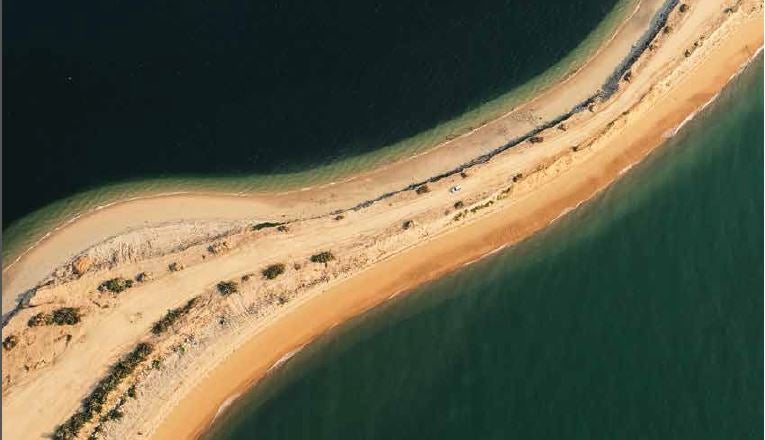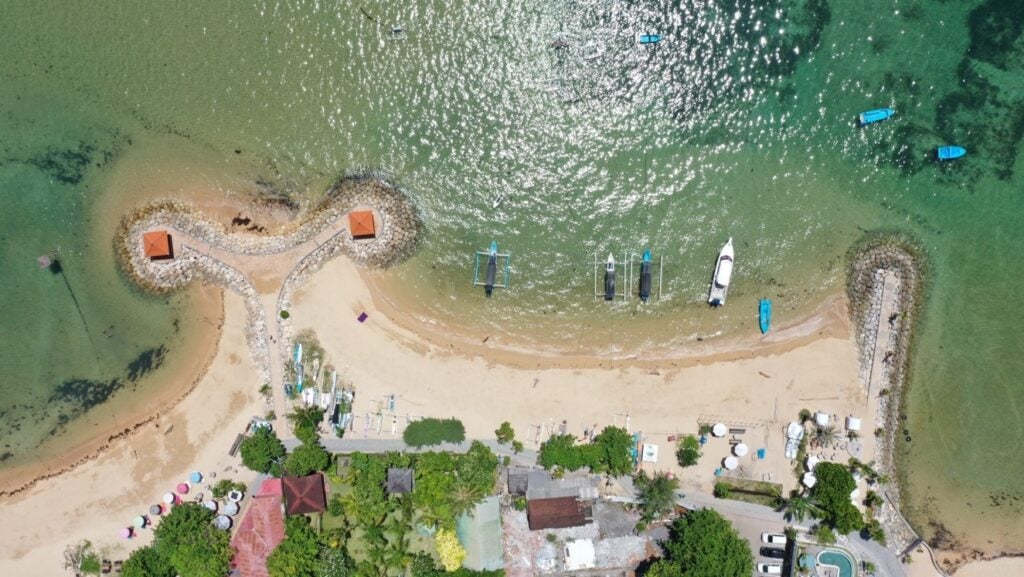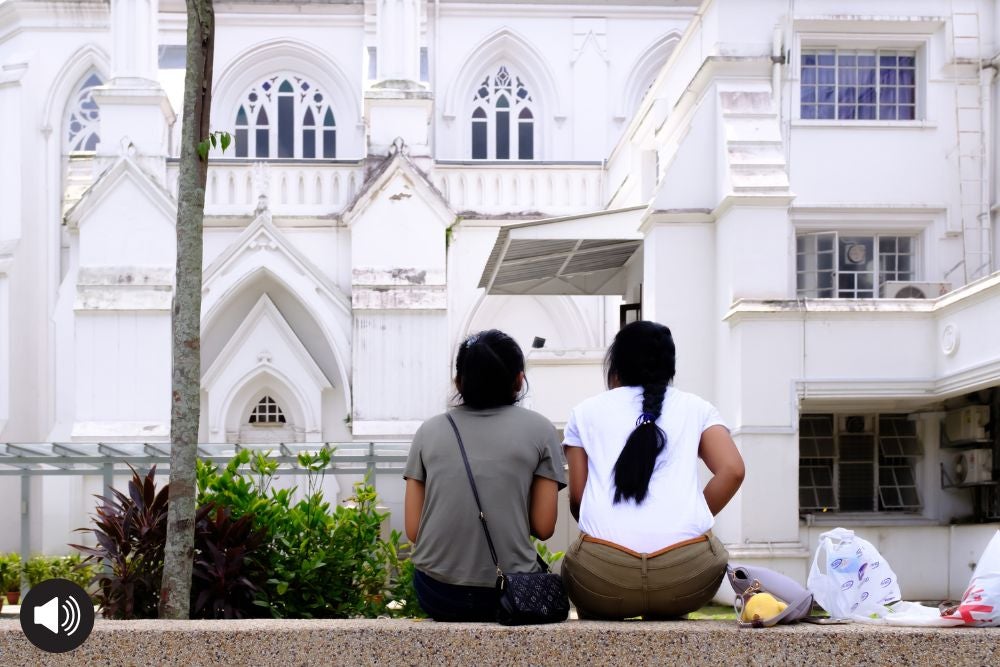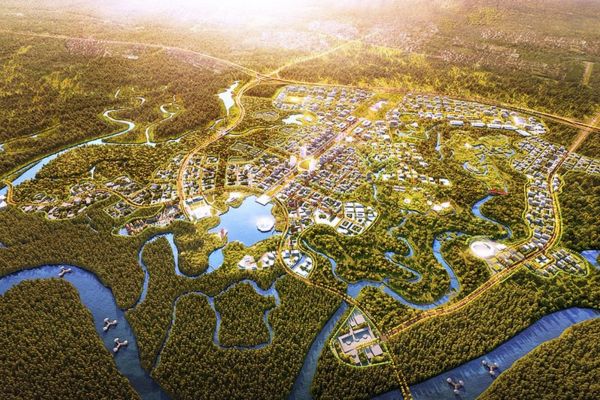S.AND: The Future of Coastal Cities in the Indian Ocean World
The DFG-Emmy Noether Research Group “S.AND—The Future of Coastal Cities in the Indian Ocean World” (S.AND) is a team of researchers analysing sand uses along the shifting shorelines of the Afrasian Sea. Zooming in on acts of coastal maintenance and engineering, we want to shed light on the role of sand in place-making and infrastructuring in four different cities. By shifting the lens to sand itself—a material ‘thing’ with infinitely flexible, destructive, and augmentative capacities–S.AND offers new ways to think about human problems of territory, politics, ecosystem, and survival. Thinking with sand can produce fresh ideas and methods for the study of emerging socio-natures in the Anthropocene. This piece outlines the research project, touches on its key objectives, and introduces two case studies that our research group at the Max Planck Institute for Social Anthropology in Halle is presently working on.
Sand and social theory
Urbanisation and global population growth rates are fuelling a surge in demand for sand, especially in Asia and Africa. Land loss and the spectre of climate change have resulted in fortification and maintenance practices that require more and more aggregate (the industrial term for inert granular materials). Along with water and cement, aggregate is an essential ingredient in concrete. However, sand extracted from rivers, marine sea beds and quarries is also used as fill material in land reclamation for harbour expansions or construction purposes. Sand has thus become the material for protecting urban property and assembling land as a resource for global investment. Our research project proposes to write sand into the social history of port cities, assuming that this mineral oscillating between motion and stability, land and sea, is quietly informing the human experience of sinking cities and sociotechnical responses to climate change.
Considering the recent explosion in demand, scientists and journalists warn that time is running out for sand. Excessive use in land reclamation projects and construction not only depletes resources but also causes serious ecological damage by interfering with coastal sedimentation, clouding seawater, and disrupting terrestrial ecosystems. However, this global sand crisis has been mainly considered through a quantitative lens, and discourse continues to be dominated by political economists and natural scientists (see Torres et al. 2017; Larson 2018). While anthropologists have criticized the disruptive and exploitative use of mined sands in coastal megaprojects (Padawangi 2019; Arnez 2021), a detailed study of the role of sand in building and protecting coastal cities and their social consequences is still lacking.

To date, little is known about urban processes, social practices, and political formulations that rely and build on sand, not just in the Afrasian Sea, but also in the Mediterranean or Pacific (for recent studies investigating these linkages, see Bremner 2020, Dawson 2023, Choplin 2023). Many investigations of sand do not address how the use of sand relates to social organization, building cultures, or cosmology. Recent work on the political geology of extractivism draws interesting links between the development of geological sciences and shifting resource frontiers. While sand extraction often violently disrupts lives and destroys futures, the reinsertion of sand into urban space also affects time–repairing shorelines with sand extends the lifespan of certain infrastructures, such as shipping facilities, while upending others. The growing scarcity of sand further deepens the economic and ecological disparity between regions, as countries have invested in engineering technologies that are less reliant on sand (Ley, forthcoming).
What if a mineral as mundane and ubiquitous as sand creates both the possibility of coastal cities and oceanic trade, and engenders and shapes the socio-political formations of coastal life? Given the central role of sand in port cities, S.AND proposes to fill this gap by foregrounding sand and sand use as an integral part of social and political relationships and co-constitutive element of urban ecologies.
Building and Maintaining Coastal Infrastructure in the Afrasian Sea
Natural deposits of sand, such as dunes, mudflats, or cliffs, have provided the material basis of port cities—moderating subsequent infrastructural development that allowed the Afrasian Sea, also known as the Indian Ocean, to become a veritable maritime crossroad. The S.AND research group believes that the Afrasian Sea is apt for an examination of sand’s role in building and protecting coastal cities.
The geological foundations of port cities like Chennai and Mombasa are overlaid and entangled with human-made infrastructures crafted from “cementitious earthwork” such as docks, breakwaters, and roads. Streamlined port infrastructure built from concrete and the spatial management of coastal populations allowed for unparalleled levels of interconnectedness in the region, shaping coasts’ relationship with a wider oceanic world. Along coasts of the Afrasian Sea, adjusting to sand movements is an important strategy for securing existence and navigating ecological “chokepoints”. Using sand as a tool, coastal dwellers improvise roads or breakwaters where they are absent, reclaiming land from the sea, and fix seeping riverbanks. Sand also plays a central role in beach and mangrove tourism, a growing economic sector. When coastlines crumble or rivers choke with sediment, maintenance work, such as beach nourishment, becomes necessary. Sand also played a critical role in the deadly 2004 tsunami that destroyed inhabited coastlines and lastingly changed human relations with the sea (see Hastrup 2011; Rajani Priya et al. 2010)—in many places, sand dunes acted as ‘bio-shields’ to alleviate flooding.

Rather than treating sand as a mere tool in maintenance practices, this project considers sand as a relational, “generative and agentive co-constituent” of lifeworlds. In so doing, this study sets itself apart from existing sand research in the social sciences which mainly approaches infrastructures and lifeworlds built with sand to account for large-scale environmental degradation, vulnerability, the material underpinning of empire or the securitization of national territory. Following Elinoff et al., it sees in sand a material that not just produces urban infrastructures and reshapes the physical constitution of cities, but also “the political itself.”
Research Methods and Sites
In 2024, the team (comprising Javed Kaisar, Tarini Monga, Teresa Cremer and Lukas Ley) will develop an understanding of the challenges of living on and protecting shores via long-term ethnographic research at four different but interconnected sites: Bhasan Char (Bangladesh), Goa (India), Mombasa (Kenya), and Denpasar (Indonesia). We believe ethnographic methods will yield an unprecedented account of socio-natures and the material politics of urban infrastructure in these port cities.
The team will develop a detailed account of how communities, municipalities, or companies deal with sand and make sense of eroding shorelines. S.AND is also committed to collecting first-hand knowledge in coastal cities connected through oceanic currents, histories of empire and colonisation, and climate change. We will explore coastal infrastructures built on/with sand as results of historical and ongoing human entanglements with volatile urban ecologies. Sand-human entanglements will be assessed from a power-dynamics perspective, that is, how the positions of individuals and communities affect the global market, dominant planning schemes, and material tendencies. The project will then be able to relate changes in demand and use not just to the vagaries of a global sand market, but also to the interplay of material, infrastructural, and sociocultural dynamics, and the acceleration and intensification of environmental degradation. The following accounts are condensed field-notes from two of our sites and provide a glimpse of our ongoing ethnographic research.
Maintaining Bhasan Char
Two decades ago, an island surfaced in the estuary of the Meghna River, about sixty kilometres from the Bangladeshi mainland. This char’s muddy landscape is composed of fine sand, silt, and clay. The marshy grounds quickly populated with mangroves. In 2017, the Bangladeshi government began building barrack-type housing facilities for Rohingya refugees. A comprehensive array of infrastructures provided shelter and essential amenities to around 100,000 displaced Rohingyas. Today, 144 housing blocks elevated 1.5 metres off the ground by concrete columns make up one of the world’s largest planned refugee settlements.
The research project, carried out by Javed Kaisar, aims to understand the role of sand in making a silt island habitable. It focuses on maintenance practices carried out by the government and the inhabitants themselves. Maintenance requires intervention into the geological makeup of the island. For instance, state authorities regulate sediment use to preserve the structural integrity of embankments that primarily consist of sand and clay. Island inhabitants who wish to cultivate crops are prohibited from using sandy soil in order to curb ground salinity. Chemical and organic fertilisers can mitigate salinity, but farmers know how important sand is for successful cultivation, as one farmer put it: “If we could mix sand (balu) with soil, the soil would transform into fertile land.”

Sand further assumes a binding role as a primary component in mortar, which workers use in construction practices such as bricklaying, masonry, and plastering. This mortar not only holds bricks together, but is also used to build walls and other infrastructures in the camp stable. Despite the char’s formation through sedimentation, sand suitable for construction and repair does not occur naturally on Bhasan Char. Instead, it comes to the char through an extensive network involving people, ships, transportation infrastructures, and rivers.
Sand and environmental commons in Bali
Elsewhere, in Denpasar, the provincial capital of Bali, sand has been at the centre of a vibrant environmental justice movement. In 2019, the anti-reclamation alliance ForBALI stopped plans to fill the Bay of Benoa. According to the organization, investors were planning to cover around 75 per cent of the bay with soil for land use. This project was decried by many as destroying a fragile ecology with economic, cultural, and spiritual value. Preliminary fieldwork by Lukas Ley examined efforts of the environmental NGO Friends of the Earth Bali (Walhi) to prevent the opening of sand mines along Bali’s west coast, fearing that mining would reanimate the spectre of land reclamation.
Stressing the ecological value of Bali’s littoral zone and envisioning other forms of living with near shore ecologies such as Benoa Bay has produced a social activism that advocates for, among other things, the preservation of Bali’s mangrove forests. Fighting against the opening of sand mines and preventing the expansion of the harbour into forested land mobilizes the notion of sand as a vital ingredient of living ecologies, such as beaches and the sea. While the Balinese have long organized around water, it is sand that has enabled activists to shape the “financial frontier” of Balinese tourism. Sand plays a vital role not only in entrenching privatisation but also in shoring up protest against new “waves of dispossession” and protecting island commons.

A charismatic substance
Sand is a charismatic substance. It fascinates humans of every age and pervades the global touristic imaginary. Sand also allows for the construction of highly durable materials, such as concrete, that have changed cultures of building at a global scale and in lasting ways. Finally, it constitutes one of coastal cities’ most precious resources: land. A study of sand’s uses will show how the substance mediates a multitude of material processes, such as the rise in sea levels, spatial expansion, and shipping. Sand preserves the transformed relations of land and resource access upon which accumulation in port cities relies. Scientists and activists pointing to the finitude and overlooked ecological role of sand only contribute to the power of sand and expand on the meaning and value of this substance. Can residents build on the charisma of sand to (re)claim access to city space in Asian and African cities? The possible lessons of this study’s findings are in the situated and distributed affordances of sand in materializing access and maintaining agency in climate-changed oceans. For a city not just like Singapore, but across the Indian Ocean world, the material tendencies of sand can provide new, grounded avenues for thinking about the co-constitution of urban space and political power and reveal the ecological and social costs of building on sand.
---------------------------------------------------------------------------------------------------------------------------------------
Lukas Ley was a keynote speaker for the ARI conference “Speculative Climate Urbanism and the Sea: The Inequalities of Building and Living on Water in Southeast Asia”; Javed Kaisar also shared his research on sand uses in Bhasan Char at the same event.
To find out more about the project, follow these links:
S.AND website: www.s-and.org | “The Public Sandbox” repository | Sand Bundles platform within the Ecological Design Collective
The views expressed in this forum are those of the individual authors and do not represent the views of the Asia Research Institute, National University of Singapore, or the institutions to which the authors are attached.
Lukas Ley is an environmental and urban anthropologist at the Max Planck Institute for Social Anthropology in Halle, Germany, where he leads a DFG-funded Emmy Noether research group on the infrastructural lives of sand in the Indian Ocean World. His research is concerned with urban temporality and the politics of coastal infrastructure. Current research projects investigate the role of sand in protecting shorelines from erosion in Denpasar, Indonesia, and the future of concrete in Marseille, France. Ley’s first book, “Building on Borrowed Time: Rising Seas and Failing Infrastructure in Semarang” was awarded the Social Science Prize by the European Association for Southeast Asian Studies and received an Honorable Mention for the Benda Prize of the Association for Asian Studies.
Javed Kaisar is a PhD candidate at the Max Planck Institute for Social Anthropology and a member of the Emmy Noether Group on "Sand: The Future of Coastal Cities in the Indian Ocean". Javed holds a Bachelor and a Master of Social Science in Anthropology from Jahangirnagar University, Bangladesh and a Master of Science in Social Anthropology at Stockholm University, Sweden. Javed has conducted several ethnographic research in Bangladesh, exploring the dynamics and tensions between resident Bengalis and Rohingya refugees in Cox's Bazar, as well as the challenges of children involved in riverbed sand and stone mining.
Teresa Cremer is a PhD candidate at the Max Planck Institute for Social Anthropology and a member of the Emmy Noether Group on “Sand: the Future of Coastal Cities in the Indian Ocean”. She has worked on water, crisis narratives, urban issues and social justice in Namibia, South Africa and Germany. Teresa’s current research rethinks the place of sand in shaping life in Mombasa, Kenya, by ethnographically tracing practices of coastal protection, experiences of environmental transformation and heritage discourses.
Tarini Monga is a PhD candidate at Max Planck Institute for Social Anthropology and a member of the Emmy Noether research group titled, ‘S.AND – the Future of Coastal Cities in the Indian Ocean’. Her research is based in Goa, India and examines the use of materials such as sand, silt and mud. With a focus on territorial projects of river embankments and construction techniques, she is interested in how access and ownership are materialised on a rapidly urbanising shoreline. This aids an understanding of Goa’s emergence as a site of accumulation and its enmeshment in networks of extraction, while considering practices of commoning in the (un)making of coastal imaginations.












